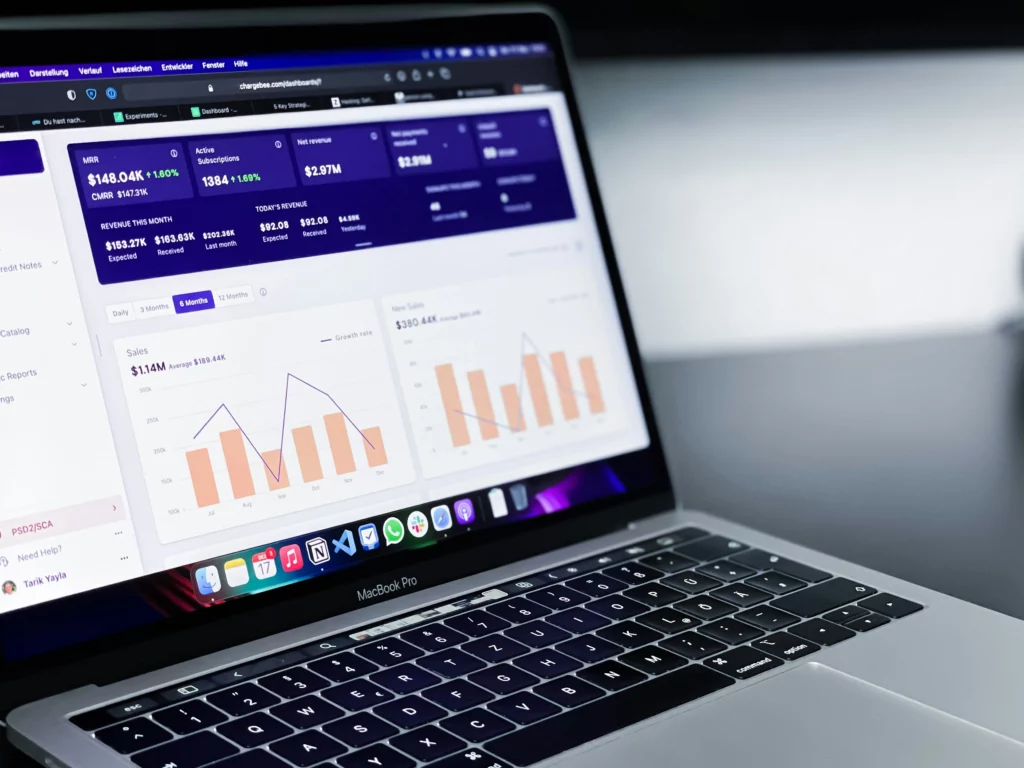Drip Campaigns: Guide to Effective Drip Marketing
Table of Content
Drip campaigns maintain continuous engagement and build lasting relationships with prospects in today’s competitive world of digital marketing. It’s very crucial to stay connected with potential customers throughout their buying journey
Drip campaigns enable companies to send customized material that appeals to specific users at a time when personalized communication is crucial. Marketers can make sure every email is timely and relevant by automating a sequence of messages that are triggered by user actions or predetermined time intervals. This strategy not only helps clients remember your brand but also helps them go through the sales funnel with ease.
In this blog, we will look at the specifics of drip campaigns, including their benefits, types, and best practices for producing successful campaigns.

What are drip campaigns?
Drip campaigns, also known as drip marketing or drip email campaigns, are a sequence of pre-scheduled messages that are delivered to prospects or consumers over time. These messages are usually automated and prompted by specified user activities or predetermined times. Drip campaigns are intended to nurture prospects, keep your audience engaged, and move them through the sales funnel with timely and relevant material.
Drip email campaigns use automated solutions to streamline the marketing process, ensuring that each message is delivered at the most appropriate time. This not only saves time and resources but also increases the chances of converting leads into loyal customers.
Benefits of Drip Campaigns
Drip Campaigns can be highly effective for various reasons:
1. Automated Communication:
Drip campaigns ensure consistent communication with your audience, maintaining engagement without requiring constant manual effort. Automation saves time and resources, allowing marketers to focus on other strategic tasks.
2. Personalization:
Drip email campaigns can be tailored to individual user behavior and preferences, resulting in more relevant and personalized content. By segmenting the audience based on demographics, behaviors, or purchase history, drip marketing can deliver highly specific messages that resonate with each segment.

3. Nurturing Leads:
Drip campaigns are effective in gradually engaging and nurturing leads over time, guiding them through the sales funnel until they are ready to make a purchase. Regular, value-driven communications help in building trust and establishing a relationship with potential customers.
4. Increased Conversion Rates:
Drip email campaigns provide timely and relevant information, encouraging prospects to take action at the right moments. Automated follow-up emails ensure that no potential lead is forgotten, increasing the chances of conversion.
5. Customer Retention:
Drip campaigns can be used to onboard new customers, providing them with essential information and support to enhance their experience. Regular updates, offers, and personalized content can keep existing customers engaged and loyal to the brand.
6. Scalability:
Drip campaigns can reach a large audience without additional effort, making it easier to scale marketing efforts. Campaigns can be easily adjusted or expanded based on performance data and changing business needs.

7. Measurable Results:
Drip marketing platforms offer detailed analytics and insights into campaign performance, allowing marketers to track open rates, click-through rates, conversions, and other key metrics. Continuous monitoring and analysis enable ongoing optimization of campaigns for better results.
Types of Drip Campaigns
Different types of drip campaigns, also known as drip marketing or drip email campaigns, serve various purposes in nurturing leads, engaging customers, and driving conversions. Here are some common types:
1. Welcome Drip Campaigns:
Welcome drip campaigns engage new subscribers with a series of introductory emails. These emails often include a welcome message, an introduction to your brand, and a guide to getting started.
These campaigns outline what subscribers can expect in future communications, setting the tone for a positive relationship.
2. Onboarding Drip Campaigns:
Onboarding drip campaigns help new users get acquainted with your product or service. These emails provide step-by-step instructions, tutorials, and tips to ensure a smooth start.
By offering helpful resources and support, onboarding campaigns encourage users to actively engage with your product or service.

3. Educational Drip Campaigns:
Educational drip email campaigns deliver informative content to subscribers over time. This can include blog posts, articles, videos, and how-to guides.
By sharing valuable knowledge, these campaigns position your brand as an authority in your industry, building trust with your audience.
4. Re-engagement Drip Campaigns:
Re-engagement campaigns target subscribers who have become inactive or unresponsive. These emails aim to revive interest with special offers, personalized content, or reminders.
By tracking responses, you can identify subscribers who are still interested and those who may need further nurturing or be removed from your list.
5. Promotional Drip Campaigns:
Promotional drip email campaigns focus on driving sales by offering discounts, special deals, and time-sensitive offers. These campaigns create urgency and encourage immediate action.
These emails emphasize the benefits and features of your products or services, persuading subscribers to make a purchase.

6. Cart Abandonment Drip Campaigns:
Cart abandonment drip campaigns target customers who have added items to their shopping cart but did not complete the purchase. These emails remind customers of their abandoned items and often include incentives to complete the purchase.
Offering customer support or answering common questions in these emails can help address any concerns or obstacles to completing the purchase.
7. Lead Nurturing Drip Campaigns:
Lead nurturing drip campaigns guide prospects through the sales funnel by providing relevant content and resources at each stage. These emails help build relationships and keep leads engaged until they are ready to convert.
By tailoring content to the lead’s behavior and interests, these campaigns make interactions more personalized and effective.
8. Product Launch Drip Campaigns:
Product launch drip campaigns create anticipation and excitement for new products or services. These emails provide sneak peeks, early access, and exclusive information.
By offering special pre-launch deals, these campaigns can drive early sales and generate buzz.

9. Event Drip Campaigns:
Event drip email campaigns promote webinars, conferences, workshops, and other events. These emails provide event details, registration links, and reminders.
Pre-event and post-event emails keep attendees engaged, providing them with relevant information, schedules, and follow-up content.
How to create a better Drip campaign?
1. Define Clear Goals
Determine what you want to achieve with your drip campaigns (e.g., lead nurturing, sales conversions, customer onboarding). Also, set measurable objectives to track the success of your drip marketing efforts.
2. Segment Your Audience
Group your audience based on behaviors, demographics, and engagement levels. Also, tailor messages in your drip email campaigns to each segment for higher relevance and impact.
3. Craft Engaging Content
Create personalized and valuable content that addresses the needs of each segment in your drip campaigns by using a mix of educational, promotional, and informative content to keep your audience engaged in your drip marketing
4. Use Strong Call-to-Actions (CTAs)
Include clear and compelling CTAs in each email of your drip email campaigns to guide recipients toward the desired action. Also, ensure CTAs align with your campaign goals and audience expectations.
5. Leverage Automation Tools
Utilize platforms like HubSpot, to automate your drip campaigns. Also, try to set up triggers based on user actions or specific time intervals to deliver messages at the right moments in your drip marketing. If you are using multiple software, then you can configure and automate workflows around them using tools like Robylon AI, etc.
6. Test and Optimize
Conduct A/B testing on subject lines, content, and CTAs to determine what resonates best with your audience in your drip email campaigns. Also, analyze campaign performance using metrics like open rates, click-through rates, and conversions.

7. Monitor and Adjust
Regularly review your drip marketing campaign’s performance and make necessary adjustments by keeping an eye on engagement metrics and feedback to identify areas for improvement in your drip email campaigns.
8. Maintain Consistency
Ensure a consistent tone and style throughout your drip campaigns to build a cohesive brand experience. Try to stick to a regular sending schedule in your drip marketing to keep your audience engaged without overwhelming them
By following these steps, you can create more effective drip campaigns that engage your audience, nurture leads, and drive conversions.
Working with multiple web applications for drip campaigns can become increasingly challenging. This is where companies like Robylon AI come in, specializing in creating custom and automated workflows around one or more web applications for your business.
Interested in learning more? Schedule a demo with us.
FAQs
1. How often should we send emails in a drip campaign?
The frequency of emails depends on your specific goals and audience preferences, but a common approach is to start with more frequent emails and then space them out over time as the campaign progresses.
2. How do we personalize content in drip email campaigns?
Use data such as the recipient’s name, past interactions, purchase history, and preferences to tailor the content of your emails, making each message more relevant and engaging.
3. What is the difference between drip campaigns and regular email marketing?
Drip campaigns are automated and consist of a series of emails sent based on user actions or predetermined schedules, while regular email marketing often involves one-off emails or newsletters sent to a broader audience without specific triggers.
4. How can we ensure that our drip emails don’t end up in the spam folder?
Follow best practices like using a reputable email service provider, maintaining a clean email list, personalizing emails, avoiding spam language, and ensuring your emails are properly formatted.







